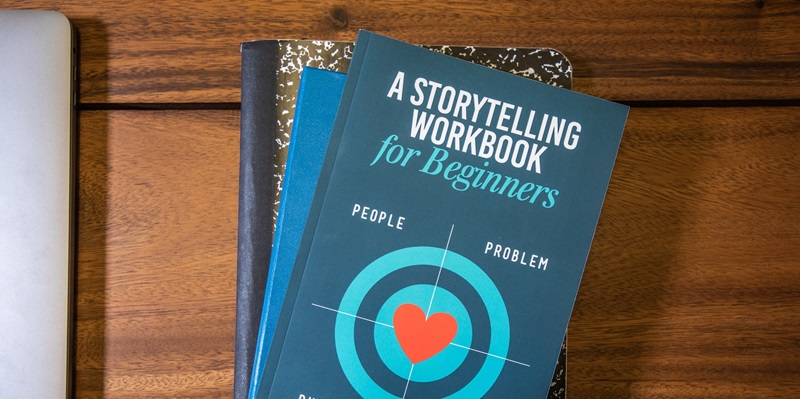In today’s competitive business landscape, simply presenting cold facts and figures is no longer enough to capture the attention and loyalty of your audience. Whether you’re pitching a new idea to investors or promoting your products and services, a well-crafted narrative can bridge the gap between mere information and compelling action. Harnessing the power of storytelling is equally crucial in the boardroom as it is in a book. By weaving a captivating story, you have the ability to guide, illuminate, and draw in your B2B audience, ultimately leading to stronger brand connections and business success.
The Power of Storytelling: How a well-told story can bridge the gap between cold facts and compelling action
Stories have a unique ability to engage people on an emotional level, making them more receptive to the messages being conveyed. By presenting information in the form of a story, you can create a narrative that captivates your audience, holds their attention, and fosters a deeper understanding of your brand and offerings. A well-crafted story allows your audience to connect the dots, visually and emotionally, bringing your message to life in a more memorable way. While facts alone may be forgotten, a story is more likely to stick with your audience and impact their decision-making process.
The Role of Storytelling in B2B Marketing: Stories as Guides, Illuminators, and Audience Engagers
In B2B marketing, it is essential to create stories that guide your audience through their buyer’s journey. By understanding their pain points, aspirations, and challenges, you can craft a narrative that mirrors their needs and desires, setting the stage for a story that resonates deeply. A well-told story serves as an illuminator, shedding light on the unique value proposition your brand offers and how it solves your audience’s problems. Moreover, storytelling engages your audience by creating an emotional connection, fostering trust, and enhancing brand credibility.
Key Elements of a Powerful B2B Narrative: Exploring the components that turn a simple narrative into a potent tool for connecting with your audience
While there is no one-size-fits-all formula for a compelling B2B narrative, certain key elements can significantly enhance its impact. First and foremost, understanding your audience is crucial. Conduct thorough research to uncover their pain points, motivations, and aspirations. This will enable you to develop a story that mirrors their experiences and desires, making it more relatable and engaging.
Moving beyond traditional character development, B2B stories involve businesses, products, or even entire industries. By personifying entities, the story becomes more relatable and allows your audience to see themselves as a part of the narrative. Additionally, the story should be built around conflict, which could include breaking into a new market or struggling to innovate in a crowded space. Conflict adds tension and keeps your audience engaged throughout the narrative.
The Resolution as a Demonstration of Brand Success: How the resolution of a story showcases the brand’s ability to overcome challenges and thrive
Every story needs a resolution that reaffirms your brand’s ability to overcome obstacles and succeed. This resolution serves as a powerful demonstration of your brand’s capabilities, inspiring confidence in your audience. By showcasing your brand’s victories and achievements, you establish trust and credibility, reinforcing the narrative’s central message.
The Moral of the Story: How the moral acts as a compass, pointing to what the brand stands for and believes in
Every story needs a moral, a takeaway that resonates with your audience and reflects your brand’s values and beliefs. The moral of the story acts as a compass, pointing your audience towards what your brand is all about. It should align with your brand’s mission statement and core principles, creating a cohesive and authentic narrative that connects with your audience’s emotions and influences their decision-making process.
Evoking Emotions for a Deep Connection: The importance of creating an emotional response in the audience to establish a strong and personal connection with the brand
To craft a resonant B2B narrative, it’s crucial to evoke emotions that create a deep and personal connection with your audience. Whether it’s tapping into their fears, aspirations, or sense of pride, emotions can be a powerful tool for engagement. By creating an emotional response, your narrative becomes more relatable and memorable, strengthening the bond between your brand and your audience.
Crafting a resonant narrative is a powerful tool in B2B marketing. By telling stories that guide, illuminate, and draw in your audience, you can leave a lasting impression that goes beyond the realm of transactions and spreadsheets. A well-told narrative mirrors your audience’s needs and desires, engages them emotionally, and demonstrates your brand’s ability to overcome challenges. By carefully developing the key elements of your B2B narrative, you can create a compelling story that resonates deeply and connects with your audience on a personal level, leading to enhanced brand loyalty, increased conversions, and long-term business success.

